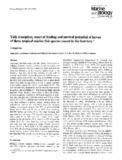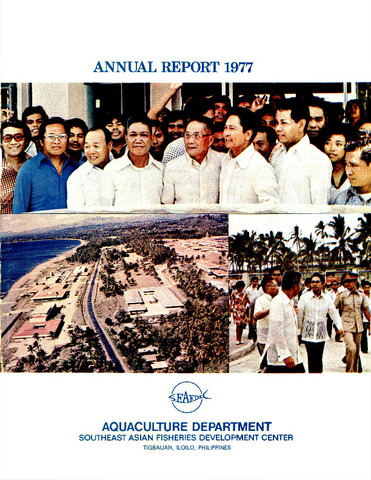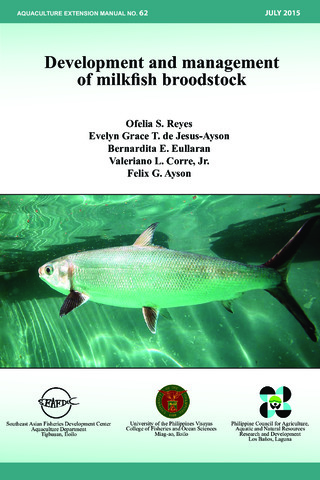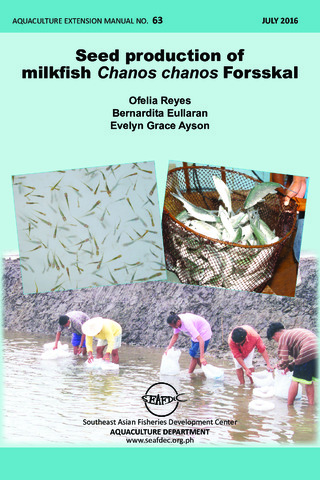Yolk resorption, onset of feeding and survival potential of larvae of three tropical marine fish species reared in the hatchery

ดู/
Request this document
วันที่
1986ผู้เขียน
Page views
181เมตาดาต้า
แสดงระเบียนรายการเต็มCited times in Scopus
Share
นามธรรม
This paper provides basic early life-history information on milkfish (Chanos chanos), seabass (Lates calcarifer) and rabbitfish (Siganus guttatus) which may explain in part the observed differences in their survival performance in the hatchery. Egg size, larval size, amount of yolk and oil reserves and mouth size are all greater in milkfish than in seabass, and greater in the latter than in rabbitfish. During the first 24 h after hatching, rabbitfish larvae grow much faster than milkfish and seabass larvae at similar ambient temperatures (range 26°–30°C, mean about 28°C). The eyes become fully pigmented and the mouths open earlier in seabass and rabbitfish (32–36 h from hatching) than in milkfish (54 h). Seabass larvae learn to feed the earliest. Yolk is completely resorbed at 120 h from hatching in milkfish, and yolk plus oil at 120 h in seabass and 72 h in rabbitfish at 26° to 30°C. Milkfish and seabass larvae have more time than rabbitfish to initiate external feeding before the endogenous reserves are completely resorbed. Delayed feeding experiments showed that 50% of unfed milkfish larvae die at 78 h and all die at 150 h from hatching. Milkfish larvae fed within 54 to 78 h after hatching had improved survival times: 50% mortality occurred at 96 to 120 h, and 10 to 13% survived beyond 150 h. Unfed seabass larvae all died at 144 h, while 6 to 13% of those fed within 32 to 56 h after hatching survived beyond 144 h and well into the subsequent weeks. Unfed rabbitfish larvae all died at 88 h, while 7 to 12% of those fed within 32 to 56 h after hatching survived beyond 88 h. A delay in initial feeding of more than 24 h after eye pigmentation and opening of the mouth may be fatal for all three species.
Description
Contribution No. 167 of the Aquaculture Department, SEAFDEC.
การอ้างอิง
Bagarinao, T. (1986). Yolk resorption, onset of feeding and survival potential of larvae of three tropical marine fish species reared in the hatchery. Marine Biology , 91(4), 449-459. https://doi.org/10.1007/BF00392595
เรื่อง
Taxonomic term
คอลเลกชัน
- AQD Journal Articles [1222]
รายการที่เกี่ยวข้อง
แสดงรายการที่เกี่ยวข้องตามชื่อผู้แต่งผู้สร้างและเรื่อง
-
Annual report 1977
Southeast Asian Fisheries Development Center, Aquaculture Department (Aquaculture Department, Southeast Asian Fisheries Development Center, 1978) -
Development and management of milkfish broodstock
Reyes, Ofelia S.; de Jesus-Ayson, Evelyn Grace T.; Eullaran, Bernadita E.; Corre Jr., Valeriano L.; Ayson, Felix G. (Aquaculture Department, Southeast Asian Fisheries Development Center, 2015)The manual provides developed and refined techniques for collection and transport of spawned eggs and larvae, as well as larval rearing. It also describes the necessary facilities for maintaining milkfish broodstock. Guidelines ... -
Seed production of milkfish Chanos chanos Forsskal
Reyes, Ofelia; Eullaran, Bernadita; Ayson, Evelyn Grace (Aquaculture Department, Southeast Asian Fisheries Development Center, 2016)A 26-page manual describing the site selection, hatchery design, spawning, larval rearing, natural food production, and economic analysis for milkfish.





